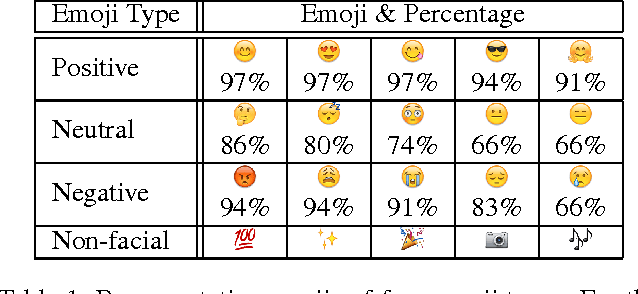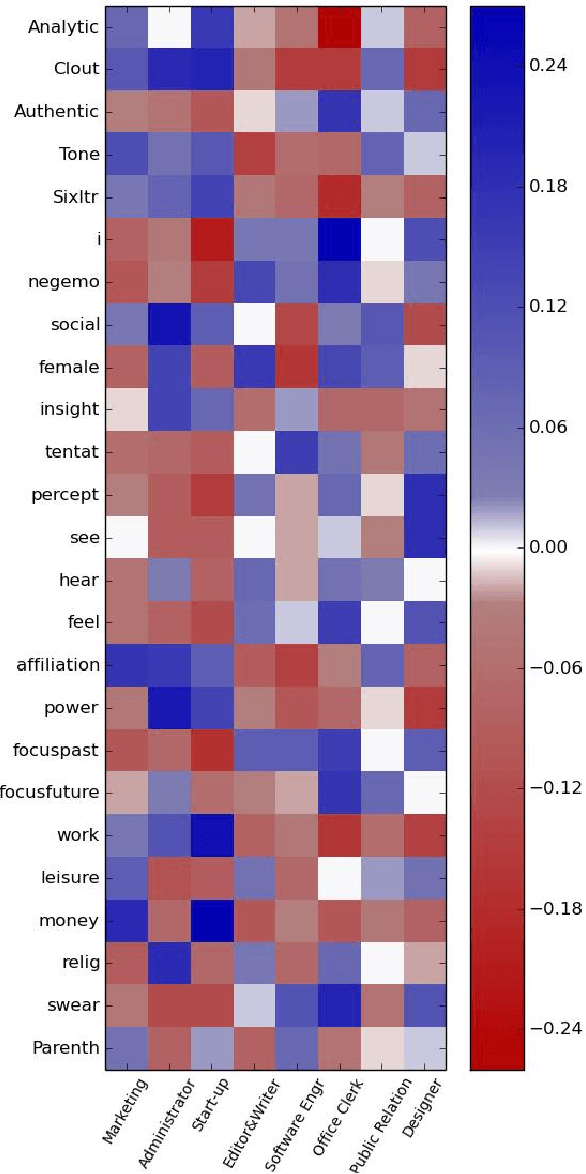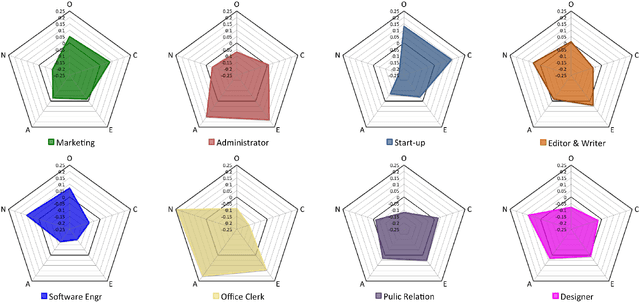Thuy-vy Thi Nguyen
Spice up Your Chat: The Intentions and Sentiment Effects of Using Emoji
Mar 08, 2017



Abstract:Emojis, as a new way of conveying nonverbal cues, are widely adopted in computer-mediated communications. In this paper, first from a message sender perspective, we focus on people's motives in using four types of emojis -- positive, neutral, negative, and non-facial. We compare the willingness levels of using these emoji types for seven typical intentions that people usually apply nonverbal cues for in communication. The results of extensive statistical hypothesis tests not only report the popularities of the intentions, but also uncover the subtle differences between emoji types in terms of intended uses. Second, from a perspective of message recipients, we further study the sentiment effects of emojis, as well as their duplications, on verbal messages. Different from previous studies in emoji sentiment, we study the sentiments of emojis and their contexts as a whole. The experiment results indicate that the powers of conveying sentiment are different between four emoji types, and the sentiment effects of emojis vary in the contexts of different valences.
What the Language You Tweet Says About Your Occupation
Jan 22, 2017



Abstract:Many aspects of people's lives are proven to be deeply connected to their jobs. In this paper, we first investigate the distinct characteristics of major occupation categories based on tweets. From multiple social media platforms, we gather several types of user information. From users' LinkedIn webpages, we learn their proficiencies. To overcome the ambiguity of self-reported information, a soft clustering approach is applied to extract occupations from crowd-sourced data. Eight job categories are extracted, including Marketing, Administrator, Start-up, Editor, Software Engineer, Public Relation, Office Clerk, and Designer. Meanwhile, users' posts on Twitter provide cues for understanding their linguistic styles, interests, and personalities. Our results suggest that people of different jobs have unique tendencies in certain language styles and interests. Our results also clearly reveal distinctive levels in terms of Big Five Traits for different jobs. Finally, a classifier is built to predict job types based on the features extracted from tweets. A high accuracy indicates a strong discrimination power of language features for job prediction task.
 Add to Chrome
Add to Chrome Add to Firefox
Add to Firefox Add to Edge
Add to Edge